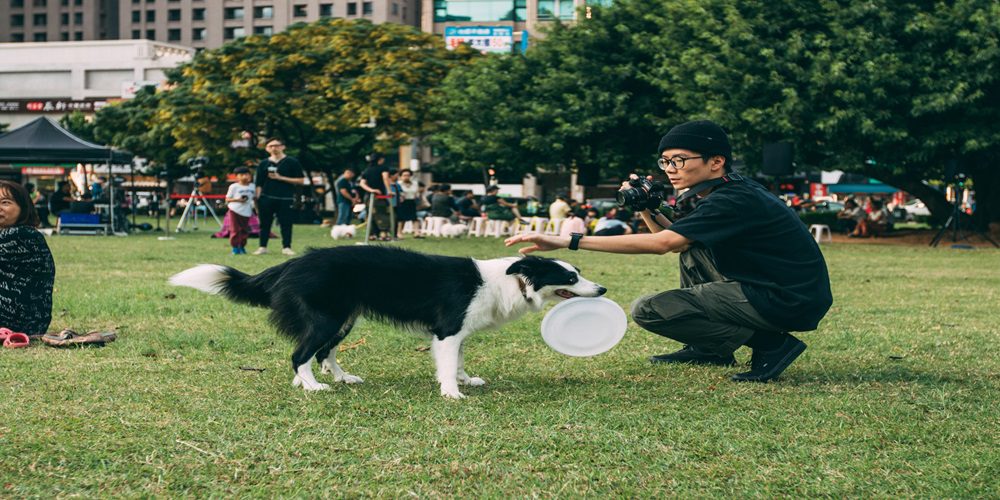Common Mistakes to Avoid when Training your Furry Friend

Are you struggling to train your four-legged companion? We all want a well-behaved and happy furry friend, but sometimes we unintentionally make mistakes that hinder their progress. Don’t worry, though – in today’s blog post, we’ll explore the most common training blunders and how to avoid them. So grab a treat for your pup and get ready to unleash the secrets of successful canine coaching!
Introduction to Dog Training
Training your furry friend can be a fun and rewarding experience for both you and your dog. Not only does it strengthen the bond between the two of you, but it also helps create a well-behaved and obedient dog. However, training a dog can be a challenging task, especially for first-time pet owners.
Before diving into the common mistakes to avoid when training your furry friend, let’s take a closer look at what dog training actually is. Dog training is essentially teaching your four-legged companion various behaviors and commands through consistent instruction and reinforcement.
Importance of Avoiding Mistakes in Dog Training
Dog training is an essential part of having a well-behaved and obedient furry companion. However, it is not uncommon for dog owners to make mistakes during the training process that can hinder their progress and even cause behavioral issues in their dogs. Therefore, it is crucial to understand the importance of avoiding these mistakes in dog training.
Firstly, making mistakes during training can significantly affect your dog’s learning process. Dogs are intelligent animals and can quickly pick up on cues, both verbal and physical. If you consistently make errors during training, your dog may become confused and struggle to understand what you want them to do. This confusion can lead to frustration for both you and your dog, making the training process much more challenging.
Moreover, making mistakes during dog training can also damage the trust between you and your furry friend. Dogs look up to their owners as their pack leader and rely on them for guidance and protection. When a mistake is made during training, it can create uncertainty in your dog’s mind about who is in charge. This uncertainty may result in disobedience or other behavioral issues as your dog becomes unsure of what is expected of them.
Another crucial reason why avoiding mistakes in dog training is essential is that it promotes consistency and reinforces positive behavior. Consistency is key when it comes to teaching dogs new behaviors or commands; if you are constantly changing how you train or giving mixed signals through inconsistent actions or commands, this will only confuse your pooch further. In contrast, by avoiding mistakes, you are providing clear expectations for your dog’s behavior, allowing them to learn faster and retain information better.
Furthermore, avoiding mistakes leads to effective communication with your pet. Dogs do not understand human language; therefore, they rely heavily on our body language and tone of voice to comprehend what we want from them. Making errors such as using harsh punishments or failing to reward good behavior can negatively impact this communication between owner and pet.
Common Mistakes and their Consequences
Training your furry friend can be an exciting and rewarding experience for both you and your pet. However, it is not always smooth sailing and there may be some bumps along the way. One of the main reasons why training can become difficult is due to common mistakes that pet owners make without even realizing it. These mistakes can have consequences not only on your pet’s behavior but also on your relationship with them.
Let’s take a look at some of the most common mistakes that dog owners make when training their furry friends and their consequences:
1. Inconsistency:
One of the biggest mistakes that people make while training their pets is being inconsistent with rules and commands. It is important to set clear rules and boundaries from the beginning, and stick to them consistently. Inconsistency in training can lead to confusion for your dog, making it harder for them to understand what is expected of them. This can result in disobedience and frustration for both you and your pet.
2. Punishing instead of positive reinforcement:
It’s natural to get frustrated when our dogs don’t behave as we want them to, but using punishment as a means of discipline is not effective when it comes to training. Instead, positive reinforcement should be used where good behavior is rewarded with treats or praise. Punishment may cause fear or aggression in dogs, leading to long-term behavioral issues.
3.Healthy rewards:
While giving treats for good behavior may seem like a no-brainer, many owners tend to overdo it which results in overweight or unhealthy pets. Treats should only be given occasionally and in small portions as part of a balanced diet.
4.Not considering age or breed:
Different breeds have different temperaments requiring unique approaches when it comes to training. Similarly, puppies require different training methods than adult dogs due to their age-related behaviors such as chewing or potty-training accidents. Knowing these differences and adjusting accordingly will result in more successful training sessions.
5.Lack of patience:
Training your furry friend takes time and patience. Many owners expect their pets to learn things quickly and get frustrated when they don’t see immediate results. It’s important to remember that every pet learns at their own pace, just like humans. Showing impatience or frustration during training can negatively impact your pet’s enthusiasm and motivation.
Tips to Prevent and Correct Mistakes in Dog Training
When it comes to training our beloved furry friends, we all want to do our best and avoid making any mistakes. However, sometimes, even with the best intentions, we can inadvertently make errors that hinder the progress of our dog’s training. To ensure a successful and positive training experience for both you and your pup, here are some tips to prevent and correct mistakes in dog training.
1. Know the right techniques: One of the common mistakes that pet owners make when training their dogs is using incorrect techniques. It is essential to have a basic understanding of different dog training methods, such as positive reinforcement or clicker training. These techniques focus on rewarding desirable behaviors rather than punishing unwanted ones. Before starting any training program, familiarize yourself with these methods to avoid causing confusion or distress for your pup.
2. Be consistent: Consistency is key when it comes to dog training. Dogs thrive in routine, so it is crucial to establish clear rules and follow them consistently. For example, if you’re teaching your dog not to jump on people, everyone in the household should enforce this rule consistently; otherwise, your pup will become confused about what behavior is acceptable.
3. Use positive reinforcement: As mentioned earlier, positive reinforcement techniques are highly effective in dog training. By praising and rewarding your dog’s desired behaviors with treats or verbal praise, they will be more likely to repeat them in the future.
4.Provide appropriate guidance: Dogs learn through repetition and require appropriate guidance during their learning process. Do not expect your dog to understand new commands instantly; instead be patient and provide gentle guidance until they grasp what you want them to do.
5.Be patient: Patience is another crucial aspect of successfully correcting mistakes in dog training. Remember that every pup learns at their own pace; therefore never scold or punish them for not getting something right away – this will only hinder their progress.
6.Vary the environment: Dogs do not generalize well, so it is essential to train them in different environments to ensure they understand that the commands apply everywhere, not just at home. Take your dog for training sessions at a park, on a walk, or even at a friend’s house to help them become accustomed to obeying commands in various settings.
By following these tips and avoiding common mistakes in dog training, you can ensure that your furry friend learns effectively and happily. Remember always to stay positive, patient and consistent throughout their training journey. With time and effort invested, both you and your pup will surely reap the rewards of a well-behaved and obedient companion.
Positive Reinforcement Techniques for Effective Training
Positive reinforcement is a widely accepted and effective method for training your furry friend. It involves rewarding desired behaviors in order to increase the likelihood of those behaviors being repeated in the future. This technique is based on the concept that positive consequences will encourage your dog to continue exhibiting good behavior.
The first step towards successful positive reinforcement training is identifying what motivates your dog. Every dog is unique and may be motivated by different things such as treats, toys, or verbal praise. Once you have identified what your dog finds rewarding, use it consistently during training sessions to reinforce desired behaviors.
Timing is crucial when using positive reinforcement techniques. The reward should be given immediately after the desired behavior occurs so that your dog can make a clear connection between their actions and the reward. Delayed rewards or inconsistent reinforcement can confuse your furry friend and hinder their learning process.
Consistency is also key in positive reinforcement training. It’s important to establish consistent rules and expectations for your dog, as well as being consistent with rewards and consequences for their behavior. For example, if you want your dog to sit before getting a treat, make sure they always have to sit before receiving the reward.
It’s important to keep each training session short and end on a positive note. Overextending sessions can lead to frustration and boredom for both you and your furry friend. Shorter sessions also allow them time to process what they have learned without becoming overwhelmed.
Another important aspect of using positive reinforcement techniques is being patient with your furry friend. Just like humans, dogs need time to learn new behaviors and might not catch onto things right away. Avoid punishing or scolding them if they don’t get it right away; instead, calmly redirect them back to the task at hand.
Understanding Your Dog’s Body Language and Needs
Understanding your dog’s body language and needs is crucial in creating a strong bond and successful training with your furry friend. Dogs communicate primarily through their body language, and as owners, it is essential to learn how to read and interpret these signals correctly.
One of the most common mistakes that owners make when training their dogs is not paying attention to their body language. Many times, we focus only on verbal commands and neglect the nonverbal cues our dogs are sending us. It is important to remember that a dog’s behavior is a reflection of its emotions, and by understanding their body language, we can better address their needs.
So what are some common body language cues that we should be aware of? Let’s start with the tail. Contrary to popular belief, a wagging tail does not always indicate happiness. The positioning of the tail can tell us a lot about our dog’s current state. A relaxed tail held at a natural level means that your dog is calm and content. On the other hand, if their tail is held low or tucked between their legs, it may indicate fear or anxiety.
Similarly, pay attention to your dog’s ears. When they are upright and forward-facing, it generally means they are alert or interested in something. But if their ears are flattened against their head or slightly pulled back, it could be a sign of fear or stress.
Another important aspect of reading your dog’s body language is observing its posture. A confident dog will have its head held high with an open mouth and relaxed facial expression while standing tall on all four legs. However, if you notice your dog cowering with its tail tucked under and trying to make itself appear smaller than it already is – this could be an indication of fear.
Apart from understanding basic body language cues, it is also vital to recognize patterns in your furry friend’s behavior. For example, observe how they act when they want food versus when they want to play. This will help you differentiate between their wants and needs, allowing you to provide them with appropriate attention and training.
In addition to interpreting body language, it is equally important to understand your dog’s needs. All dogs have basic emotional and physical requirements that must be met for them to lead a happy and healthy life. These include regular exercise, proper nutrition, mental stimulation, and love and affection from their owners.
Bonding with Your Dog through Proper Training
One of the most important aspects of building a strong and healthy relationship with your furry friend is through proper training. It not only helps in establishing yourself as the leader, but also creates a bond of trust and understanding between you and your dog. Training provides mental stimulation for your dog and fosters good behavior, making them a well-mannered companion.
The following are some essential tips to help you bond with your dog through proper training:
1. Consistency is Key: Dogs thrive on consistency, so it’s crucial to establish a set routine when it comes to training. This includes using consistent commands and hand gestures, providing rewards consistently, and setting boundaries that are always enforced.
2. Use Positive Reinforcement: Positive reinforcement is an effective method for bonding with your dog while training. Praise, treats, and affectionate pats serve as powerful motivators for dogs to perform desired behaviors.
3. Avoid Punishments: While positive reinforcement encourages good behavior, punishment can damage the bond between you and your dog. Physical punishments or scolding can cause fear or aggression in dogs; instead, focus on redirecting their behavior towards something positive.
4. Be Patient: Every dog learns at their own pace, so patience is key when it comes to training. Some dogs may take longer than others to master certain commands or behaviors; be patient and keep practicing until they get it right.
5. Make Training Fun: Training should be an enjoyable activity for both you and your furry friend. Incorporating games into the training process not only makes it more engaging but also strengthens the bond between you two.
6. Involve Your Dog in Daily Activities: Bonding with your dog doesn’t just happen during designated “training sessions.” Involving them in daily activities such as running errands or going for walks will strengthen the bond between you two outside of formal training sessions.
7.Maintain Boundaries: Consistent enforcement of boundaries is crucial when it comes to building trust and respect between you and your dog. Dogs need to understand what they can and cannot do, so setting clear boundaries and enforcing them consistently will help them learn.
Proper training is an essential aspect of bonding with your dog. By being consistent, using positive reinforcement, being patient, making it fun, involving them in daily activities, and maintaining boundaries, you can create a strong bond with your furry friend that will last a lifetime. Remember to always approach training as a collaboration between you and your dog and focus on building a relationship based on trust, love, and understanding.
Conclusion
It’s important to remember that training your furry friend takes time, patience, and consistency. By avoiding these common mistakes, you can ensure a smoother and more successful training experience for both you and your pet. Remember to always reward positive behavior, be consistent with commands and techniques, and most importantly, have fun! With perseverance and proper guidance, your furry friend will become a well-behaved companion in no time. So don’t get discouraged if there are setbacks along the way – keep practicing and enjoy the journey of building a strong bond with your beloved furry friend.





